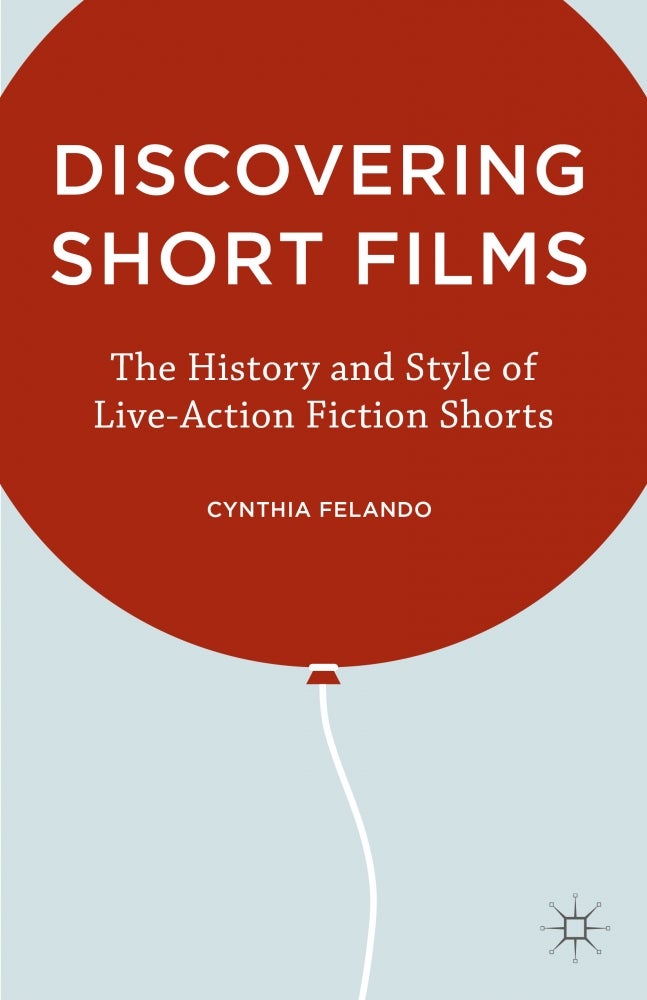
The Art of Brevity

In 2011, when Cynthia Felando first began teaching a UC Santa Barbara course on short films, she was astonished to discover the dearth of scholarship on the subject. So she decided to compile it herself. The result: one of the few known volumes on live-action fiction short films.
“When I started looking into the available course material for my class, there was almost nothing,” explained Felando, a lecturer in UCSB’s Department of Film and Media Studies. “I truly could not believe how little there was.”
Her book, “Discovering Short Films: the History and Style of Live-Action Fiction Shorts,” (Palgrave Macmillan, 2015) is the first to lay out a comprehensive theory behind so-called “shorts” (defined as any film up to 60 minutes in length), and to make the case that they have a narrative language and cinematic conventions that vary from those associated with full-length live-action feature films.
Felando said her goal in writing the book was “to establish a framework for critical analysis of live-action fiction shorts by suggesting ways to approach them.” In it, she surveys the history of the short film, from the silent era to the present, and argues that live-action shorts have unique storytelling strategies, due in part to their inherent time constraints.
For example, she noticed that short films often avoid the traditional narrative arcs and common motifs of full-length features. “I realized there were huge differences between shorts and feature-length films in the treatment of characters,” Felando said. “There are rarely heroes or love stories in shorts, and the films often end on an intense moment or a surprise moment.”
Though feature-length films typically delve into the evolution of a protagonist over the course of a physical or spiritual journey, shorts often focus on characters at a single moment in time. “Characters don’t tend to change as they do in feature-length film — there’s just not enough time,” remarked Felando.
Taken together, these storytelling strategies and common narrative elements define the canon of the non-fiction short. Felando sees them as broad themes that cross genre boundaries and appear in shorts of varying lengths, effectively creating a shared language of non-fiction short filmmaking.
In addition to providing the course materials Felando needed, “Discovering Short Films” was something of a passion project. “It goes back to childhood,” she explained. “I began as a short film fan, and then I became involved in some short film programming for the Los Angeles International Film Festival. I was always keenly interested in shorts, and my work inspired me to see more shorts and to actively be engaged with them.”
In fact, Felando says she has seen “easily thousands” of short films, and she keeps a personal database of each movie. It includes a synopsis, cast and crew information and notes about whether she thought the film was successful and why. One of her hopes for “Discovering Short Films” is that filmmakers will use the book to better understand how to approach in a practical way the process of making a short film.
At the end of the volume is an index of short live-action fiction films with brief synopses. They represent a wide-ranging, though carefully culled, survey of the medium. “It’s part of my effort to give people titles they can explore,” Felando said. “Most of them are films I appreciate or absolutely love, but I wanted to give people who are new to this area some films to see that are relatively easy to find so they can become more familiar with the form.”
In the United States short films are often seen as stepping-stones for new directors to hone their craft, but other regions view them differently, according to Felando. “In Europe, even filmmakers who have had success in feature-length films make shorts,” she said. “In this country, they tend to be seen as a way to learn how to make films and as ‘calling cards’ for feature-length films.”
In the book, Felando identifies some prominent American filmmakers who also produce short films. Among them are Wes Anderson, Spike Jonze and Martin Scorsese, all of who returned to the short format after finding success in feature films — a practice Felando hopes will grow as shorts get more attention in film journals and on the Internet.
Film festivals and the Academy of Motion Picture Arts and Sciences have awarded prizes to short films for decades and, as Felando realized early in her book research, entire websites are devoted to the art of the short film. Still, very little published material exists. She said she hopes her book will help change that, potentially inspiring other film and media scholars to join her in thinking and writing critically about shorts.



